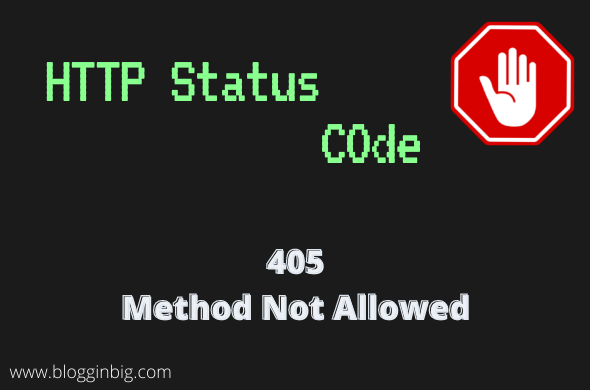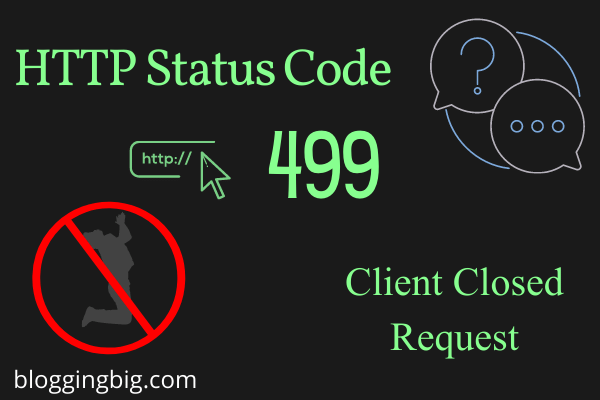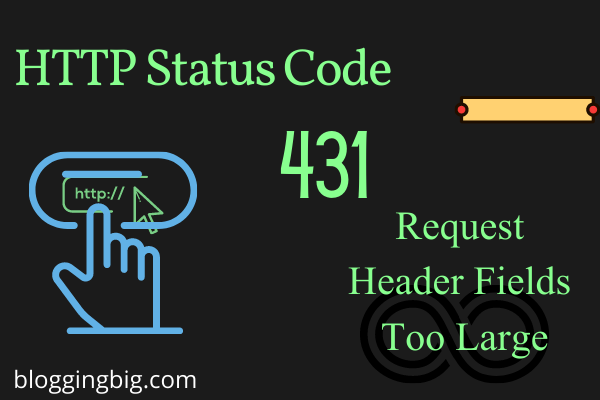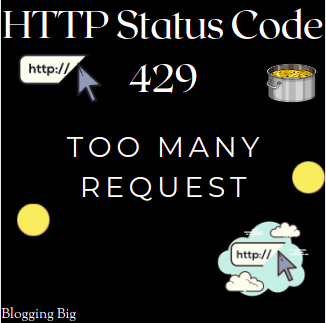Navigation
What Is HTTP Status Code 405 Method Not Allowed?
The server has rejected the HTTP method that the web browser is using, as shown by an HTTP 405 Error. Learn why it could show up on your site and how to get rid of it fast without jeopardizing your internet reputation.
There’s nothing more aggravating to a customer looking for quick satisfaction than seeing a mistake on your website. If instead of getting the information they want, they see an ERROR page, the vast majority of visitors will abandon your site.
However, in addition to customers departing rapidly, your conversion rates may suffer as a result.
Not to mention that bounce rates are important to search engines.
The HTTP 405 error is one that might show on your site and lead customers to get frustrated.
Unfortunately, the mistake is shrouded in mystery. It does not provide a more thorough explanation other than stating that something has gone wrong.
The good news is that with a little investigation and effort on your part, you can rapidly identify the source of the problem and resolve it before you notice a reduction in engagement and sales.
The 405 Method Not Allowed error message is a client error, indicating that there is a problem on the client-side.
An HTTP 405 Error indicates that a web browser has attempted to access one of your pages, and your web server has responded. The server, on the other hand, has rejected the HTTP method it is employing. As a result, your browser will be unable to view the requested web page.
When this happens, your visitors will be sent to an error page, such as the ones shown below:

HTTP 405 Error Name Variations
The issue appears differently on different web servers, operating systems, and browsers. It’s also worth noting that the source of the problem may differ from one server to the next.
Consumers are most likely to see an HTTP 405 Error in one of the following ways:
- HTTP Error 405 – Method Not Allowed
- HTTP 405 Method Not Allowed
- 405 Not Allowed
- Method Not Allowed
- HTTP Error 405
Regardless matter how the problem displays, whether as HTTP Error 405 or Method Not Allowed, the issue remains the same: it’s tough to resolve. You’re aware that something is wrong, but you’re not sure what it is. It’s up to you to figure out what’s causing the problem and solve it before it causes irreversible damage.
Status
405 Method Not Allowed
Specifications
| Specification | Title |
|---|---|
| RFC 7231, section 6.5.5: 405 Method Not Allowed | Hypertext Transfer Protocol (HTTP/1.1): Semantics and Content |
Ways To Fix 405 Error
Check the URL
When you get an Error 405 on your site, the first thing you should do is double-check that you input the correct URL.
Examine the URL to check if it has all of the required letters. Make that any special characters in the URL are appropriately entered.
You might also try refreshing the page while you’re at it. It’s possible that reloading the page will get it to load properly.
If you’re certain you input the proper URL but are still getting an error, roll back any recent updates.
Rollback Recent Upgrades
A CMS like WordPress or Wix is used to host a huge number of websites. You could discover that a recent system upgrade is the source of the problem.
Consider when you first became aware of the 405 error on your website. Was it immediately following the CMS update? If this is the case, you might consider reverting to a prior version.
Uninstall New Extensions, Modules, or Plugins
Extensions and plugins might improve the functionality of your website, but they can also cause serious harm.
Some extensions have complete access over your system and may modify any code, including PHP, CSS, HTML, JavaScript, and your database. In this situation, uninstalling any new extensions you’ve recently installed to your system is suggested.
If you need assistance removing the extension, just conduct a Google search for the procedure’s official documentation.
Check Your Database Changes
Even if you uninstall an extension, the modifications it caused to your system may not be completely reversed.
Some extensions, notably those for the WordPress CMS, have complete control over the program, including full database access. An extension can change database entries that were generated and maintained by other extensions rather than the extension itself. When this happens, the extension may not know how to undo database record changes, causing the extension to ignore them after uninstallation.
In this case, the best course of action is to access the database and manually search for tables and records that may have been tampered with by the extension. You may also conduct a fast search to see if anyone else has had the same problem and how they dealt with it.
Check Your Web Server’s Configuration Files
If double-checking database updates didn’t work, look for unintended redirect instructions in your web server software’s configuration files.
Your application is served by one of two web servers: Apache or nginx.
If you’re using Apache, make sure the apache server configuration file and the.htaccess file are both correct. After you’ve found the.htaccess file, open it in a text editor and check for RewriteXXX directives.
If you’re using nginx, make sure the nginx.conf file is correct. /usr/local/nginx/conf, /etc/nginx, or /usr/local/etc/nginx are all typical locations for this file. After you’ve found the file, open it in a text editor and look for directives with the 405 response code flag. Any anomalies should be commented out, and the server should be restarted to check if the problem has been fixed.
Check the Application Logs
Your website’s history is stored in the application logs, which include which pages were accessed, which servers it linked to, and more.
Opening the application logs might lead you in the proper direction as to where the problem is coming from.
The placement of your application logs is determined by the server type. Run a search for 405 errors after you’ve located them. Hopefully, you’ll be able to figure out what’s causing the issue.
Debug Your Application Code or Scripts
If none of the suggestions above worked, it’s time to investigate if the error is caused by a flaw in some custom code within your program.
Manually debugging your application and analyzing your application and server logs might help you figure out what’s wrong.
Make a duplicate of the program and debug it step by step on a local development computer. When something goes wrong, you’ll be able to replicate the exact scenario that caused the 405 Method Not Allowed error and see the application code.
FAQs
How do I fix Error 405?
Methods to fix 405 errors:
1. Check the URL
2. Rollback Recent Upgrades
3. Uninstall New Extensions, Modules, or Plugins
4. Double-Check Your Database Changes
5. Check the Configuration Files for Your Web Server
6. Check the Application Logs
7. Debug Your Application Code or Scripts
What causes a 405 error?
HTTP 405 errors occur when a web server does not accept an HTTP method for the requested URL.
Related Post:
HTTP Status Code 101-Switching Protocols
HTTP Status Code 205 Reset Content
HTTP Status Code 300-Multiple Choices
HTTP Status Code 204 – No Content
HTTP Status Code 203 – Non-authoritative Information
HTTP Status Code 207 Multi-Status
HTTP Status Code 208 Already Reported
HTTP Status Code 400 Bad Request
HTTP Status Code 401 Unauthorized
HTTP Status Code 403 Forbidden Error
Final Word
I hope this article was able to help you with your doubts and queries related to the HTTP status code 405 Method Not Allowed. Still, if there are any queries related to this topic, feel free to ask in the comment section, we would be happy to assist you. Thank you.





Kedar Dangal
Making a difference, Adding the sum.